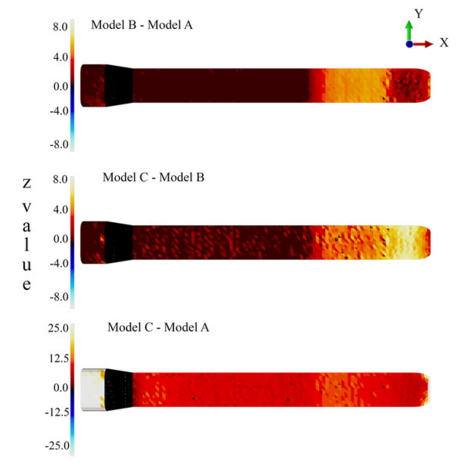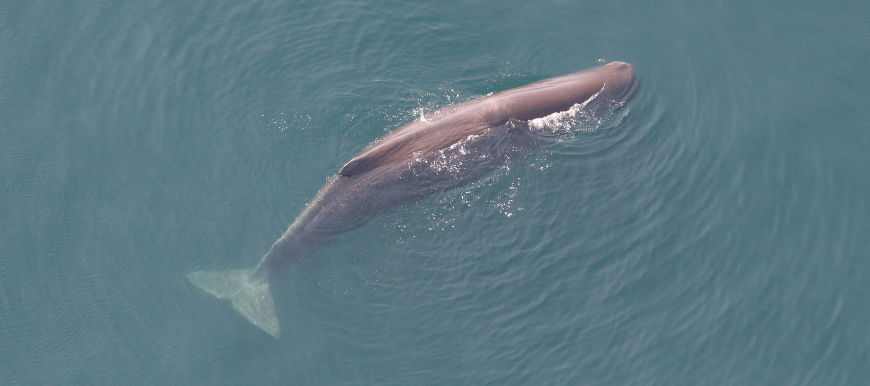In 1820, a sperm whale attacked and sank the Essex, a whaling ship from Massachusetts. The incident inspired Herman Melville to write Moby Dick, and marine biologists have been wondering ever since if the whales actually engage in ramming behaviour. A fascinating new study suggests this may be the case.
Sperm whales have the most unique foreheads in the animal kingdom. It consists of two large oil-filled sacs known as the spermaceti and the junk (yes, really). These sacs are stacked on top the other, extending for one-third of the total length of the whale and accounting for more than a quarter of its mass. A new study published in PeerJ demonstrates that this structure is tough enough to be used by males in ramming combat.

Image: Ali Nabavizadeh via PeerJ
The so-called “ramming hypothesis” has been around since the 19th century, but very little data, exists to support it (aside from some anecdotal accounts). The basic idea is that male sperm whales engage in combat to gain access to females. There may be some truth to this; only the males boast the prominent forehead.
Aside from the dearth of empirical evidence, a central problem with the theory is that the spermaceti performs a number of valuable functions. It contains sensitive anatomical structures required for echolocation, acoustic sexual selection (the famous whale song of the sperm whales), acoustic prey debilitation and buoyancy control. These structures could be seriously damaged during ramming events, calling the hypothesis into question.
But the researchers say it’s the junk — and not the spermaceti — that gets in the way during ramming combat. According to Australian evolutionary morphologist Olga Panagiotopoulou and her colleagues, the junk acts like a powerful shock absorber — one that significantly reduces the stress placed on the bones and skull during impacts. Her team’s analysis shows that the connective tissue partitions within the junk reduces stresses across the entire skull.

Probabilistic simulation. Image: Olga Panagiotopoulou et al., 2016
Using computer models and structural engineering principles, Panagiotopoulou demonstrated that this was in fact the case. By simulating ramming impacts, the researchers were able to record where ramming impacts would produce the most stress. What’s more, when the vertical tissues that comprise the junk were removed, the overall stress exerted on the skull increased by 45 per cent.
“Although the unique structure of the junk certainly serves multiple functions, our results are consistent with the hypothesis that the structure also evolved to function as a massive battering ram during male-male competition,” wrote the researchers.
A mechanical explanation isn’t sufficient to prove function or behaviour, but other clues exist. Marine biologists have previously observed scar tissue in surface areas corresponding to the male whales’ junk (no, not that junk, the other junk). And back in 1997, wildlife pilot Sandra Lanham actually saw males engaging in ramming combat. Here’s her account:
The converging whales swam to one another without obvious speed changes or deviations in course, making occasional shallow dives. About 6.10m from one other [sic], the smaller one shallow dove and a split second later, the big one did also. Levelling under water, they rammed head to head. There was surprisingly little splash on the surface. One slid to the side of the other so that their heads and upper third of their bodies overlapped. They rolled slightly, turning their bellies toward one another. It appeared that each had his mouth opened wide. It was my impression that they were trying to lock jaws or to bite one another’s head. At the exact moment their heads touched, I took another waypoint.
It took the whales about 11 to 12 minutes to reach one another and ram, which means they were probably travelling about 16 to 19 km/h when they hit. Flying directly above, Lanham was in a perfect position to observe the event. As Panagiotopoulou noted in a Plos Blog article, “When ramming events occur in shallow depths, a human observer has to be directly above the surface of the water to watch it happen. The observation from 1997, coupled with the reports of ramming attacks on 19th century whaling ships, suggests that sperm whales do sometimes participate in ramming contests.”

Image: Tim Cole/NOAA
This study doesn’t prove beyond a shadow of a doubt that male whales engage in ramming behaviour, but it certainly makes a strong case. Clearly, more observations from the field will be required before we know for sure.
[PeerJ via Plos Blogs]
Image: “Capturing a Sperm Whale” by John William Hill (1835)
